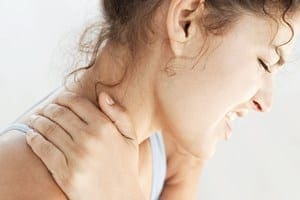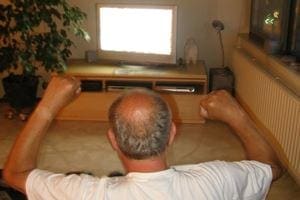When people think about scars, they tend to think about the ones that you can…

Women and Chronic Pain
 Chronic pain affects millions of Americans, but the condition is seldom portrayed in the popular media. In late 2014 and early 2015, an independent film called “Cake” starring Jennifer Aniston did just that. According to many reviewers, Aniston did an admirable job bringing her character-a chronic pain sufferer named Claire-to life and conveying the complex reality of chronic pain. And for women, that reality can be particularly complex. When it comes to chronic pain, men and women really are very different. It’s not just a reporting or media phenomenon, and it’s not just in women’s imaginations.
Chronic pain affects millions of Americans, but the condition is seldom portrayed in the popular media. In late 2014 and early 2015, an independent film called “Cake” starring Jennifer Aniston did just that. According to many reviewers, Aniston did an admirable job bringing her character-a chronic pain sufferer named Claire-to life and conveying the complex reality of chronic pain. And for women, that reality can be particularly complex. When it comes to chronic pain, men and women really are very different. It’s not just a reporting or media phenomenon, and it’s not just in women’s imaginations.
Judy Foreman, author of a book called “A Nation in Pain: Healing Our Biggest Health Problem,” recently contributed an essay to the Review section of the Wall Street Journal. Here are a couple of notable quotes from that essay:
“Clinically, women are both more likely to get chronic painful conditions that can affect either sex and to report greater pain than men with the same condition, according to studies over the past 15 years.”
“In 2008, when researchers looked at prevalence rates in 10 developed and seven developing countries, in a sample that included more than 85,000 people, they discovered that the prevalence of any chronic pain condition was 45% among women, versus 31% among men.”
“In a 2009 review, researchers from the University of Florida found that, all over the world, women get more irritable bowel syndrome, more fibromyalgia, more headaches (especially migraines) more neuropathic pain (from damage to the nervous system itself), more osteoarthritis, and more jaw problems such as TMD, as well as more musculoskeletal and back pain.”
Researchers have also discovered that women’s perception of pain and their psychological reaction to it may also be quite different from men’s. In particular, they have a greater tendency to catastrophize-in other words, to focus obsessively on their pain, fixating on worst-case scenarios and believing that it will be never-ending, debilitating and untreatable.
These quotes from Judy Foreman’s book allude to some experimental research that supports this notion and explain why it’s a problem.
“At Johns Hopkins, researchers tested 198 healthy young people (115 of them women) in the lab, triggering pain by heat, cold, and ischemia (applying a tight tourniquet). When they asked men and women to react to the pain, the women catastrophized more than men, as gauged by self-reports… It was not mood or depression, but catastrophizing that was linked to women’s reports of greater pain.”
“Catastrophizing does make a bad situation worse… Being a high catastrophizer is not just miserable, it’s a bad prognostic sign. Catastrophizing can interfere with your ability to cope: It can amplify the way your nervous system processes pain, and it can actually get in the way of benefiting from treatment.”
This all means that it’s important to look for a physician who really understands musculoskeletal pain as it affects BOTH genders. The latest research and clinical experience makes it clear that the differences are more complicated than the medical community once believed. So if you or someone you care about is in chronic pain, call or visit our office today. We can help!




